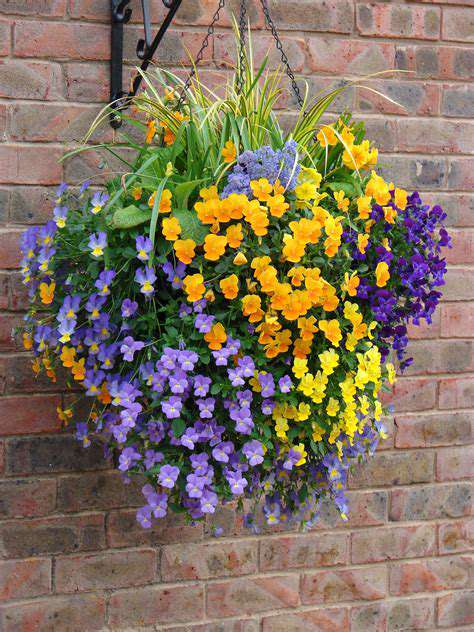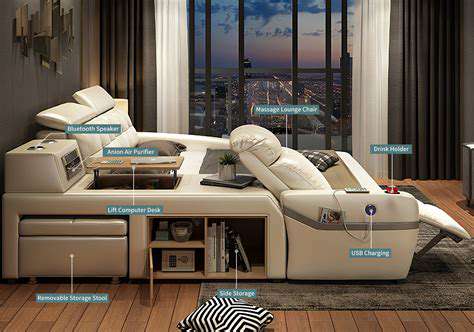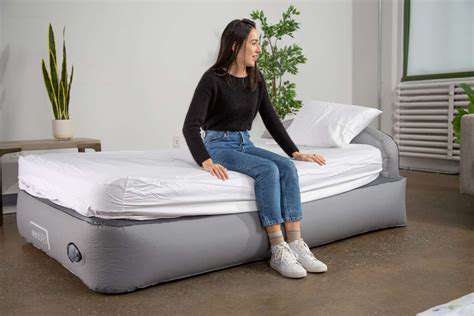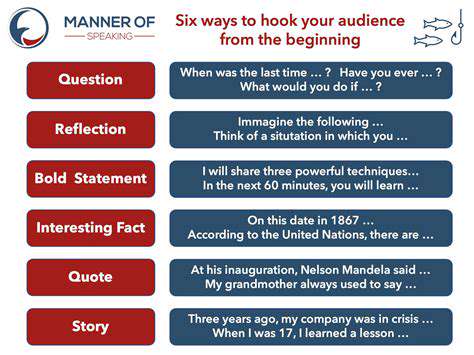Beginner's Guide to Minimalist Interior Design
Categorize your belongings into essential, occasional, and decorative items. This categorization will help you make informed decisions about what to keep, donate, or discard. Prioritizing essentials will help you avoid overwhelming your space with unnecessary items.
Decluttering Strategies for Effective Organization
Decluttering is more than just tossing things out; it's about creating a system for organizing and maintaining a clutter-free environment. Develop a step-by-step approach to decluttering each room, from sorting through belongings to discarding items you no longer need. Think about implementing a one in, one out rule to maintain a minimalist aesthetic. This rule encourages conscious consumption and reduces the likelihood of accumulating unnecessary items.
Consider using storage solutions to maximize space and keep items organized. This could involve utilizing shelves, drawers, or containers to keep things neatly tucked away. Using clear containers can be particularly helpful, allowing you to easily see what's inside and maintain a sense of order.
Assessing Furniture and Functionality
Evaluate the furniture you already own to determine if it's truly functional and necessary. Consider the size, shape, and purpose of each piece. Does the furniture fit the space effectively? Does it serve its intended purpose? Is there potential for repurposing or combining pieces to save space and create a more cohesive look?
An important aspect of minimalist design is ensuring furniture is not only aesthetically pleasing but also practical. Think about how each piece supports your daily routines and activities. If a piece of furniture is rarely used or doesn't contribute to your daily needs, consider alternatives or removing it from your space.
Exploring Minimalist Color Palettes
A key element of minimalist design is the use of a limited color palette. Focus on neutral colors, such as white, beige, gray, or black, and incorporate accent colors sparingly. This approach creates a calm and serene atmosphere that allows the essential elements to stand out. Neutral colors are versatile and can be easily combined with various textures and patterns.
Experiment with different color schemes to see which ones best suit your personal style and preferences. Consider the impact of each color on your mood and overall environment when choosing a color scheme. A carefully chosen color palette can significantly enhance the minimalist aesthetic of your space.
Incorporating Texture and Patterns
Minimalist design isn't about eliminating all texture and patterns; it's about using them thoughtfully and sparingly. Incorporate natural textures, such as wood or wool, to add warmth and visual interest to your space. Introduce subtle patterns to add depth and visual appeal without overwhelming the space. Focus on selecting high-quality materials that will stand the test of time.
Maintaining a Minimalist Lifestyle
Once you've decluttered and organized your space, establishing a minimalist lifestyle is crucial for maintaining the desired aesthetic. Adopt a buy less, choose well philosophy. This involves carefully considering your needs before making any purchases. Regularly evaluate your possessions to maintain a clutter-free environment. Practice mindfulness in your daily routines, and strive for a balance between functionality and aesthetics. This mindful approach ensures your minimalist space remains harmonious and reflects your values and lifestyle.
Choosing Essential Furniture and Decor
Understanding Minimalist Aesthetics
Minimalist design prioritizes simplicity and functionality, focusing on clean lines, neutral color palettes, and a deliberate selection of furniture and decor. It's about maximizing impact with fewer items, creating a serene and uncluttered space. This approach encourages mindful living, reducing visual distractions and fostering a sense of calm and spaciousness. Minimalism isn't about owning less, but about curating what you own, ensuring every item serves a purpose and enhances the overall aesthetic.
Key elements of minimalist aesthetics include uncluttered surfaces, well-defined spaces, and thoughtful arrangements. This approach fosters a sense of calm and allows the beauty of the space itself to shine through, rather than being overwhelmed by excessive ornamentation.
Selecting Essential Furniture Pieces
When choosing furniture, focus on pieces that are both visually appealing and highly functional. Avoid trendy or overly decorative styles. Instead, opt for timeless designs with clean lines and neutral tones. A well-chosen sofa, comfortable chairs, and a sturdy coffee table are essential for creating a comfortable and inviting living space without sacrificing aesthetic appeal. Consider the specific needs of your space and choose pieces that fit the dimensions and layout, rather than forcing furniture into an unsuitable area.
Prioritize quality over quantity. Invest in durable, well-made pieces that will last for years, avoiding the need for frequent replacements. This commitment to quality contributes to the longevity of your design choices and fosters a more sustainable approach to interior design.
Choosing a Color Palette
Neutral color palettes are a hallmark of minimalist design. These palettes create a sense of calm and allow the natural light to shine through, amplifying the space's inherent beauty. Think whites, creams, grays, and subtle beiges. These colors can be further enhanced by incorporating pops of accent colors, but keep these accents limited to a few well-chosen items, like throw pillows or artwork.
Avoid overly bold or clashing colors. A balanced color scheme allows the space to breathe and prevents visual clutter. Remember that the goal is to create a serene and uncluttered environment, and colors play a significant role in achieving this.
Incorporating Decor with Intention
Minimalist decor emphasizes intentional choices. Instead of filling the space with numerous decorative items, focus on a few key pieces that truly resonate with you. Artwork, plants, and a few well-chosen accessories can add personality and visual interest without overwhelming the space. Select items that hold personal significance or evoke a feeling of calm and serenity. Focus on quality over quantity, ensuring each item contributes positively to the overall aesthetic.
Creating a Flow and Layout
The layout of your space is crucial in achieving a minimalist aesthetic. Ensure there's a clear flow between different areas of the room. Maximize the use of open space, allowing for easy movement and visual accessibility. Consider the functionality of each piece of furniture. Is it in a spot that makes sense for its intended use? A well-organized layout is integral to a minimalist design, promoting a sense of calm and spaciousness.
Use mirrors strategically to reflect light and create an illusion of more space. A well-planned layout will contribute significantly to the overall impact of your minimalist design.
Color Palettes and Textures for a Calming Atmosphere
Choosing the Right Color Palette
Creating a calming atmosphere often hinges on the color palette you select. Soft, muted tones like pastels, light blues, greens, and lavenders are excellent choices. These colors evoke feelings of serenity and tranquility, helping to reduce stress and promote a sense of peace. Avoid overly bright or jarring colors, as they can be stimulating and counterproductive to a relaxing environment.
Consider incorporating a neutral base color, like beige or gray, to anchor the space and create a sense of stability. Then, introduce accent colors in softer shades to add visual interest without overwhelming the senses. A well-balanced color palette is key to a truly calming and inviting space.
Incorporating Natural Textures
Natural textures play a crucial role in achieving a calming minimalist aesthetic. Think linen, cotton, wool, and bamboo. These materials are inherently soothing and bring a sense of warmth and comfort to a space. Using these textures in your furniture, bedding, and decor can significantly enhance the calming atmosphere.
Adding natural elements like wood and stone can also contribute to a sense of serenity. The warmth of wood and the earthy tones of stone complement the calming color palettes effectively, grounding the space and connecting it to nature.
The Power of Soft Lighting
Lighting is an often overlooked but vital aspect of creating a calming atmosphere. Soft, diffused lighting, rather than harsh overhead lights, can significantly impact the mood of a room. Consider using warm-toned light bulbs and lamps with adjustable brightness. This allows you to tailor the lighting to create different moods throughout the day or for different activities.
The Importance of Decluttering
While color palettes and textures are important, a minimalist approach necessitates decluttering. A cluttered space can induce stress and anxiety, making it difficult to relax and unwind. To create a truly calming atmosphere, keep only the essentials and thoughtfully curate the items you include. This conscious decision to declutter creates a sense of peace and order, which is crucial to a calming environment.
Using Plants to Enhance the Space
Incorporating plants into your minimalist design can significantly enhance the calming atmosphere. The natural beauty and life of plants bring a sense of tranquility and connection to nature. Choose plants that thrive in the available light and space, and consider their height and leaf shape to maintain a balanced aesthetic. The fresh air and visual appeal of plants can add a significant touch of serenity to any minimalist space.
![How to Learn a New Language Fast [Proven Methods]](/static/images/31/2025-05/FocusonCommunication3APracticeMakesPerfect.jpg)









![How to Write a Resume That Gets Noticed [2025]](/static/images/31/2025-07/BuildingaStrongOnlinePresence3AAComplementtoYourResume.jpg)